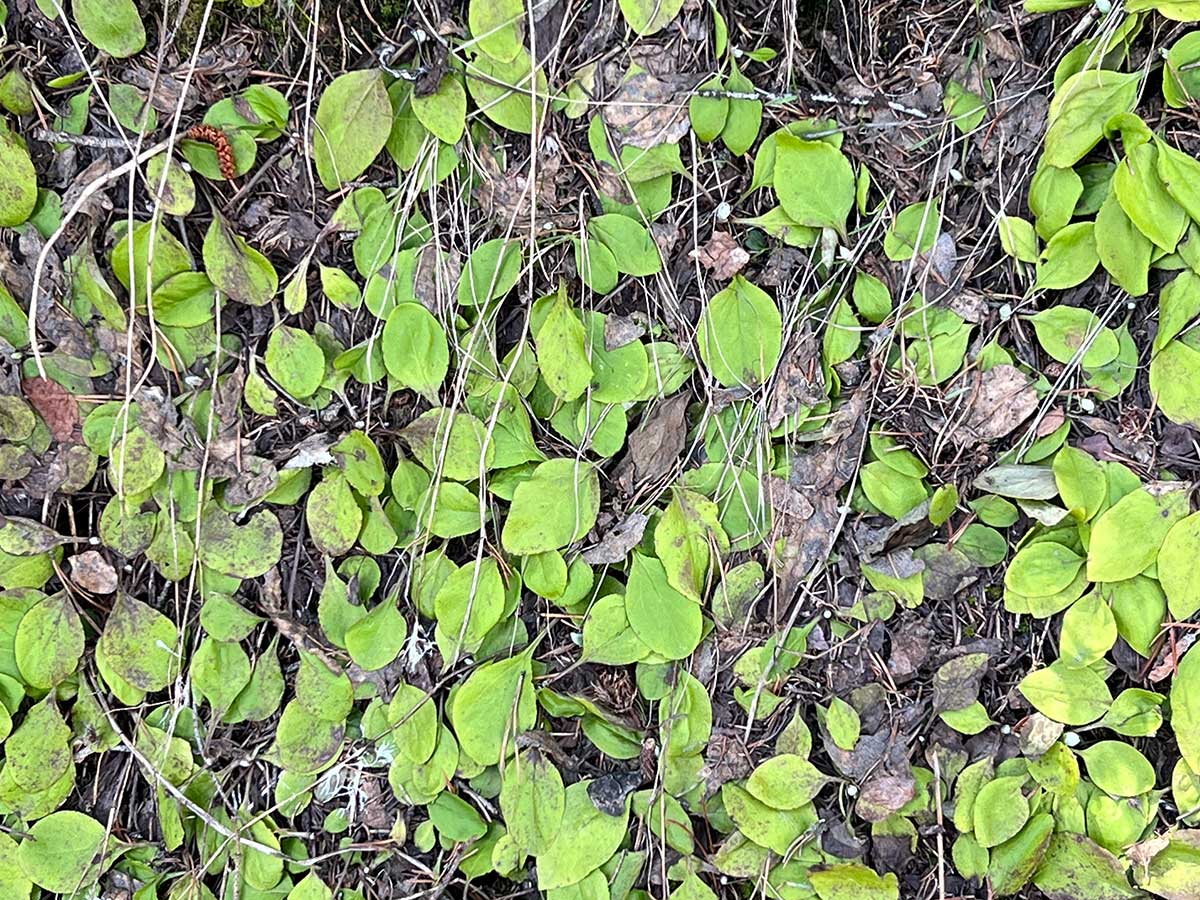Antennaria racemosa / Hooker’s pussytoes
- ground-level matte or short stems
- basal leaves
- small clumps/racemes of male or female flowers
- teeny white flowers with white involucres
- moist forest understories
Hooker’s pussytoes is a small, woolly (and glandular) and matted herb that grows in the forest understory, mostly in moist, partly shaded areas on slopes. It often colonizes bare soil patches, especially those with mineral-rich soil. Some of that is variable, of course… the leaves may also be nearly hairless, or only hairy on the undersides, and as much as 20 inches tall. The leaves are basal, oval-shaped and between 1 and 3 inches long. The plants spread by stolons that run over, under and around the leaves.
Overall, though, compared to other pussytoes species, the leaves are less silvery-fuzzy. Over winter, Hooker’s is a dull, wilted-looking mat. Other species remain fuzzy all winter.
Hooker’s pussytoes flowers from spring through August. It is dioecious; the male and female plants have different types of flower heads, especially visible due to their involucres (the actual flowers are teeny and also white). Those on female plants are a bit larger (perhaps ½ high) than those on male plants (¼ to ⅓ inches high). While these are the most visible parts of the inflorescences, they are definitely smaller and plainer than those on related species, and a lot more so than those on pearly everlasting to which it is also related. Each flower head is in a raceme (slightly stalked on a central stem) at the end of a “long”, slender stalk (see gallery photo to get an idea of size).
| Color | |
|---|---|
| Family | |
| Blossom size | |
| Inflorescence size | |
| Inflorescence type | |
| When? | |
| Where? |

